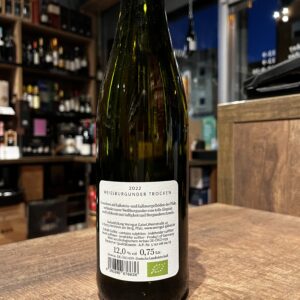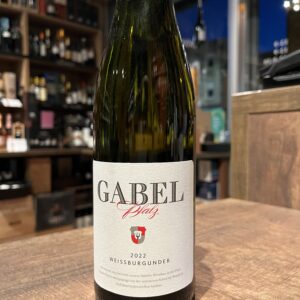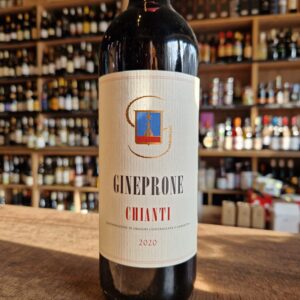-
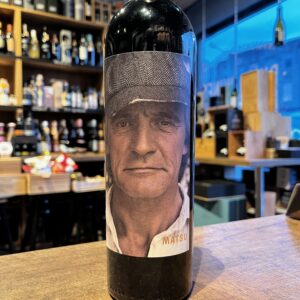 “El Recio translates as 'tough guy' and it's a clue to the style of this Tempranillo from Spain's Toro region. Made from old vines, cultivated biodynamically, the wine matures in new French oak for 14 months, giving it polish and opulence. Firm, sweet black fruit, almost fruit cake in character, with earthy and coffee notes. The guy in the picture must be a meat-eater – this wine is crying out for a juicy steak
“El Recio translates as 'tough guy' and it's a clue to the style of this Tempranillo from Spain's Toro region. Made from old vines, cultivated biodynamically, the wine matures in new French oak for 14 months, giving it polish and opulence. Firm, sweet black fruit, almost fruit cake in character, with earthy and coffee notes. The guy in the picture must be a meat-eater – this wine is crying out for a juicy steak -
 Hello my enthusiastic brethren or should I say Oenophilians! (I've just butchered the word a lit bit but I am sure you can relate to it). Wine Oenophilia is a love of wine. In the strictest sense, oenophilia describes a disciplined devotion to wine, accompanying strict traditions of consumption and appreciation. Wine lovers are also known as wine aficionados and connoisseurs. Its the people who appreciate and collect wine, particularly grape wines from certain regions, varieties or production methods. Maybe someone like you... So in the spirit of Oenophilia, I have put together 6 wines for those wine aficionados that want to push the bar a little further and feel excited. Here you have 2 whites, 1 bubbly and 3 reds, all of them are totally different from each other, underrated, unique and perform superbly in their own categories. Whites: Celler del Roure Cullerot 2019- This "orange" wine from Valencia is produced by Pablo Calatayud from Celler del Roure and let's say he brought the entire winemaking process back to basics. This is a blend of six different grapes, of which three of them were revived from ancient vines that were no longer in use. The setting is in an ancient country estate outside of Moixent, in the Valencia region. For centuries this was a farm producing grain, almonds, olives and grapes for the production of olive oil and wine. This farm contained a large, stone, olive press and extensive subterranean cellar with dozens of intact 17th century amphorae. It took a few years of research and restoration but Pablo is using these clay vessels to make wine once again. Cullerot, which means tadpole, is the white that Pablo makes in the old cellar utilizing Verdil, Pedro Ximénez, Macabeo and Chardonnay from vines ranging in age from 15–70 years old. Whole cluster pressing, natural yeast fermentation and aging in amphorae seems familiar, but it is in fact, timeless. Moment of Silence by Blankbottle - Blankbottle is not bound to a specific wine area or wine style. It’s from many different vineyards, scattered across the Western Cape of South Africa, different regions, micro-climates, soil types, and ultimately leads to different wine styles. It is driven by quality, adventure, excitement and mystery. And at the centre of it all, are the guys in the vineyards, viticulturists, winemakers, family, friends and Blankbottle fans. Stunning, all rounder there is nothing you can fault in this wine. Aromas of candied lemon, cooked apple and mango with a core of minerality. Soft and voluptuous, it has a lovely ripeness and a fleshy, creamy mouthfeel, which leads to a perfect tangy freshness giving some zip to its otherwise mellow feel. Filipa Pato 3B Sparkling Rosé- The Filipa Pato 3B Sparkling Rosé is a delicious treat of a wine from one of my favorite winemakers in Portugal. Filipa Pato is the daughter of arguably one of Portugal's most famous winemakers, Luis Pato. She is also married to a very famous Belgian Sommelier William Wouters. Despite of all of these influences, she is a fantastic winemaker in her own right since 2001. Filipa became famous when she deviated from the local traditional methods and started producing unique wines out of local indigenous grapes (Baga & Bical) that are biodynamic with minimum intervention and true to themselves and their terroir . Filipa's mantra is 'vinhos autênticos sem maquilagem' – Authentic Wines Without Makeup. The color of the 3B Rosé is a beautiful light pink. It’s soft on the nose, with light yeast, mineral, rose and strawberry aromatics. The palate is quite dry, with firm mineral flavors complemented by lemon and light raspberry. The mouthfeel is fantastically bubbly. It’s a very tasty, mineral-centric sparkler. Niepoort Voyeur 1 Ltr- Never a winemaker to shy away from experimentation, Dirk Niepoort has spent the last few years trialling amphora vinification. This is the upshot of those experiments: the first release of a field blend of old-vine red and white grapes, which spent eight months fermenting and ageing in six 1000L clay amphorae. One of the aims of the project was to reset expectations of Douro reds - all power, body and muscle. Instead, Voyeur is all about freshness, lightness and elegance, clocking in at only 12.5% alcohol. There is plenty of complexity here, partly from the sheer number of varieties in the blend; partly from earthy amphora notes. But what’s most striking is the pure red fruit and delicate florality of the wine. Chill slightly before serving and savour the freshness. Susumaniello IGP Puglia - The winery "i Pàstini", located in the heart of the Valle d'Itria land, strives to maintain the wisdom of traditions even with modern winemaking techniques, thus managing to obtain the best of enology Puglia has to offer. The vines are imported from nearby Dalmatia, which is one of the most important indigenous vines of the Brindisi area. Its name (there are several theories) is due to the fact that, a long time ago, the young Susumaniello plant was particularly productive, so much so, that it was overloaded with bunches as if it were a donkey. This unknown wine is underrated but will impress for its uniqueness and test your knowledge on how wine in general should taste like. This is a succulent and voluptuous wine with intense aromas of coffee liqueur, dark berry fruits and cocoa. Chat Fou Côtes du Rhône by Éric Texier - If you were ever sceptical about Organic wines, you have to give this one a try! This wine is Artisanal, Organic, Biodynamic, unfined and unfiltered. All with the aim to do as little intervention as possible and to let the Terroir speak for itself. Eric Texier Chat Fou natural red wine is a coupage of Grenache Tinta, Clairette and Marsanne, from the well known region of Côtes du Rhône.Eric Texier is a vigneron from Brézème, a municipality in the northern area of the Rhone Valley. For every occasion, red and white meats, charcuterie and to impress your other half.
Hello my enthusiastic brethren or should I say Oenophilians! (I've just butchered the word a lit bit but I am sure you can relate to it). Wine Oenophilia is a love of wine. In the strictest sense, oenophilia describes a disciplined devotion to wine, accompanying strict traditions of consumption and appreciation. Wine lovers are also known as wine aficionados and connoisseurs. Its the people who appreciate and collect wine, particularly grape wines from certain regions, varieties or production methods. Maybe someone like you... So in the spirit of Oenophilia, I have put together 6 wines for those wine aficionados that want to push the bar a little further and feel excited. Here you have 2 whites, 1 bubbly and 3 reds, all of them are totally different from each other, underrated, unique and perform superbly in their own categories. Whites: Celler del Roure Cullerot 2019- This "orange" wine from Valencia is produced by Pablo Calatayud from Celler del Roure and let's say he brought the entire winemaking process back to basics. This is a blend of six different grapes, of which three of them were revived from ancient vines that were no longer in use. The setting is in an ancient country estate outside of Moixent, in the Valencia region. For centuries this was a farm producing grain, almonds, olives and grapes for the production of olive oil and wine. This farm contained a large, stone, olive press and extensive subterranean cellar with dozens of intact 17th century amphorae. It took a few years of research and restoration but Pablo is using these clay vessels to make wine once again. Cullerot, which means tadpole, is the white that Pablo makes in the old cellar utilizing Verdil, Pedro Ximénez, Macabeo and Chardonnay from vines ranging in age from 15–70 years old. Whole cluster pressing, natural yeast fermentation and aging in amphorae seems familiar, but it is in fact, timeless. Moment of Silence by Blankbottle - Blankbottle is not bound to a specific wine area or wine style. It’s from many different vineyards, scattered across the Western Cape of South Africa, different regions, micro-climates, soil types, and ultimately leads to different wine styles. It is driven by quality, adventure, excitement and mystery. And at the centre of it all, are the guys in the vineyards, viticulturists, winemakers, family, friends and Blankbottle fans. Stunning, all rounder there is nothing you can fault in this wine. Aromas of candied lemon, cooked apple and mango with a core of minerality. Soft and voluptuous, it has a lovely ripeness and a fleshy, creamy mouthfeel, which leads to a perfect tangy freshness giving some zip to its otherwise mellow feel. Filipa Pato 3B Sparkling Rosé- The Filipa Pato 3B Sparkling Rosé is a delicious treat of a wine from one of my favorite winemakers in Portugal. Filipa Pato is the daughter of arguably one of Portugal's most famous winemakers, Luis Pato. She is also married to a very famous Belgian Sommelier William Wouters. Despite of all of these influences, she is a fantastic winemaker in her own right since 2001. Filipa became famous when she deviated from the local traditional methods and started producing unique wines out of local indigenous grapes (Baga & Bical) that are biodynamic with minimum intervention and true to themselves and their terroir . Filipa's mantra is 'vinhos autênticos sem maquilagem' – Authentic Wines Without Makeup. The color of the 3B Rosé is a beautiful light pink. It’s soft on the nose, with light yeast, mineral, rose and strawberry aromatics. The palate is quite dry, with firm mineral flavors complemented by lemon and light raspberry. The mouthfeel is fantastically bubbly. It’s a very tasty, mineral-centric sparkler. Niepoort Voyeur 1 Ltr- Never a winemaker to shy away from experimentation, Dirk Niepoort has spent the last few years trialling amphora vinification. This is the upshot of those experiments: the first release of a field blend of old-vine red and white grapes, which spent eight months fermenting and ageing in six 1000L clay amphorae. One of the aims of the project was to reset expectations of Douro reds - all power, body and muscle. Instead, Voyeur is all about freshness, lightness and elegance, clocking in at only 12.5% alcohol. There is plenty of complexity here, partly from the sheer number of varieties in the blend; partly from earthy amphora notes. But what’s most striking is the pure red fruit and delicate florality of the wine. Chill slightly before serving and savour the freshness. Susumaniello IGP Puglia - The winery "i Pàstini", located in the heart of the Valle d'Itria land, strives to maintain the wisdom of traditions even with modern winemaking techniques, thus managing to obtain the best of enology Puglia has to offer. The vines are imported from nearby Dalmatia, which is one of the most important indigenous vines of the Brindisi area. Its name (there are several theories) is due to the fact that, a long time ago, the young Susumaniello plant was particularly productive, so much so, that it was overloaded with bunches as if it were a donkey. This unknown wine is underrated but will impress for its uniqueness and test your knowledge on how wine in general should taste like. This is a succulent and voluptuous wine with intense aromas of coffee liqueur, dark berry fruits and cocoa. Chat Fou Côtes du Rhône by Éric Texier - If you were ever sceptical about Organic wines, you have to give this one a try! This wine is Artisanal, Organic, Biodynamic, unfined and unfiltered. All with the aim to do as little intervention as possible and to let the Terroir speak for itself. Eric Texier Chat Fou natural red wine is a coupage of Grenache Tinta, Clairette and Marsanne, from the well known region of Côtes du Rhône.Eric Texier is a vigneron from Brézème, a municipality in the northern area of the Rhone Valley. For every occasion, red and white meats, charcuterie and to impress your other half. -
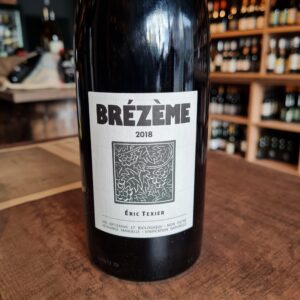 The 2019 Cotes du Rhone Brézème is a big, well structured wine that retains the freshness and lively character always present in this cuvee. The wine was vinified naturally, without added sulfur. The wine shows vivid aromas of blackberry and black cherry with hints of musk, blueberry, earth and citrus. The palate is deep and textured with earthy black fruits, bitter chocolate and mineral flavours, quite pure and long. Serve now, slightly chilled, with grilled meats, tagines and full-flavored cheeses, or cellar fo five to ten years or more.
The 2019 Cotes du Rhone Brézème is a big, well structured wine that retains the freshness and lively character always present in this cuvee. The wine was vinified naturally, without added sulfur. The wine shows vivid aromas of blackberry and black cherry with hints of musk, blueberry, earth and citrus. The palate is deep and textured with earthy black fruits, bitter chocolate and mineral flavours, quite pure and long. Serve now, slightly chilled, with grilled meats, tagines and full-flavored cheeses, or cellar fo five to ten years or more. -
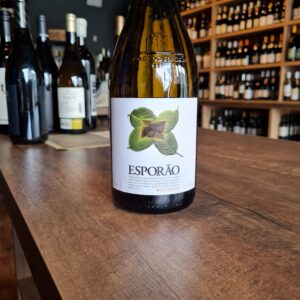 A classic wine(Organic) obtained from grapes grown at Herdade do Esporão, which showcases the consistency and rich character typical of the best Alentejo wines. It Is from vineyards that on average are about 18 years old, the soils are a mixture of granite and schist with clay and loam, and an integrated pest control and a sustainable viticultural approach is employed. Hand-harvested grapes are de-stemmed, then left with skin contact for six hours before chilling and fermentation, 50% in tank with fine lees ageing and 50% in barriques where it is aged for six months. French and American oak is used, a third new, and the wine does not undergo a malolactic fermentation. Aromas of ripe tangerine, honey and apricot with subtle notes of toast and smoke from the barrel fermentation. The palate is complex, creamy, showing ripe fruit flavours and mineral notes with a long, fresh finish.
A classic wine(Organic) obtained from grapes grown at Herdade do Esporão, which showcases the consistency and rich character typical of the best Alentejo wines. It Is from vineyards that on average are about 18 years old, the soils are a mixture of granite and schist with clay and loam, and an integrated pest control and a sustainable viticultural approach is employed. Hand-harvested grapes are de-stemmed, then left with skin contact for six hours before chilling and fermentation, 50% in tank with fine lees ageing and 50% in barriques where it is aged for six months. French and American oak is used, a third new, and the wine does not undergo a malolactic fermentation. Aromas of ripe tangerine, honey and apricot with subtle notes of toast and smoke from the barrel fermentation. The palate is complex, creamy, showing ripe fruit flavours and mineral notes with a long, fresh finish. -
 This is the first wine made by Esporão back in 1985. Label illustrated by António Poppe that changes with every organic vintage. Classic wine style made from estate grown grapes that shows the consistency and the rich, ripe fruit characters which are typical of the best Alentejo red wines. Deep dark red colour with intense spicy aroma of mature red berry fruits with discrete oak complexity. On the palate it is elegant, dense and creamy.
This is the first wine made by Esporão back in 1985. Label illustrated by António Poppe that changes with every organic vintage. Classic wine style made from estate grown grapes that shows the consistency and the rich, ripe fruit characters which are typical of the best Alentejo red wines. Deep dark red colour with intense spicy aroma of mature red berry fruits with discrete oak complexity. On the palate it is elegant, dense and creamy. -
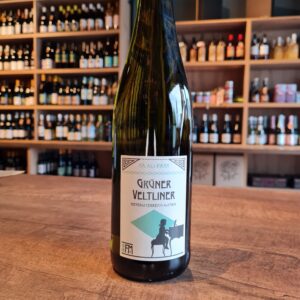 Gruner Veltliner is Austria’s most important indigenous grape and up until the 1990s it was relatively unheard of. Gruner Veltliner has many charms, one of them being the consistency of the quality and the flavour profile; it always delivers what it says on the tin. Ferdinand Mayr is a musician turned winemaker and his organic wines are singing with flavour and intensity. Whoever says Grüner Veltliner says Austria and vice versa. This version of Ferdinand Mayr is accessible and it charms you right away. Exuberant, lively nose of citrus, apple and white pepper. On the palate, the ripe fruit and spiciness create a pleasant tension with the acidity. Crispy and ripe, as if you were biting into a juicy apple. Flavor and spiciness characterize this wine. Fantastic with Japanese or Thai cuisine.
Gruner Veltliner is Austria’s most important indigenous grape and up until the 1990s it was relatively unheard of. Gruner Veltliner has many charms, one of them being the consistency of the quality and the flavour profile; it always delivers what it says on the tin. Ferdinand Mayr is a musician turned winemaker and his organic wines are singing with flavour and intensity. Whoever says Grüner Veltliner says Austria and vice versa. This version of Ferdinand Mayr is accessible and it charms you right away. Exuberant, lively nose of citrus, apple and white pepper. On the palate, the ripe fruit and spiciness create a pleasant tension with the acidity. Crispy and ripe, as if you were biting into a juicy apple. Flavor and spiciness characterize this wine. Fantastic with Japanese or Thai cuisine. -
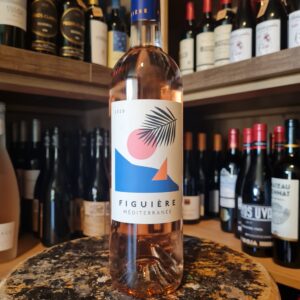 Here is a Provençal estate rosé sure to add some style to your summer! One smell, one sip and you get beamed to the Mediterranean Sea! This delicious Rosé is created by a pioneering Provence domaine of excellence. The family Combard is one of the ambassadors of a new generation of prestigious winemakers. You can smell notes of white flowers that then develop into white peach aromas. The palate expresses the velvety texture of citrus peel and the zestiness of an essential oil. Citrus profile with this wine that is astringent, green, tight and fresh.
Here is a Provençal estate rosé sure to add some style to your summer! One smell, one sip and you get beamed to the Mediterranean Sea! This delicious Rosé is created by a pioneering Provence domaine of excellence. The family Combard is one of the ambassadors of a new generation of prestigious winemakers. You can smell notes of white flowers that then develop into white peach aromas. The palate expresses the velvety texture of citrus peel and the zestiness of an essential oil. Citrus profile with this wine that is astringent, green, tight and fresh. -
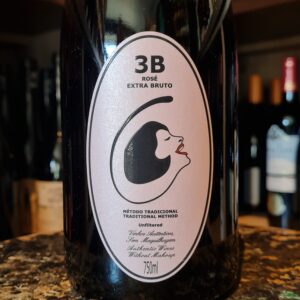 The Filipa Pato 3B Sparkling Rosé is a delicious treat of a wine from one of my favorite winemakers in Portugal. Filipa Pato is the daughter of arguably one of Portugal's most famous winemakers, Luis Pato. Passion for the traditional indigenous grape varietals of Bairrada led Filipa Pato to start her own project in 2001. She works a total of 12 hectares of vineyards scattered in various plots throughout the Bairrada appellation of Portugal. Utilizing biodynamic farming practices and minimal-intervention winemaking. The 3B is a homage to the traditional sparkling wines of Bairrada, with this being a blend of the indigenous Baga and Bical grapes. The Bical adds mineral and citrus notes to the berry red fruit notes of the Baga. This is a great little sparkler with a dry finish. Filipa and her husband, Belgian sommelier and restaurateur William Wouters, produce vinhos autênticos sem maquilagem – 'Authentic Wines Without Makeup.' 3B's-Bairrada, Baga & Bical
The Filipa Pato 3B Sparkling Rosé is a delicious treat of a wine from one of my favorite winemakers in Portugal. Filipa Pato is the daughter of arguably one of Portugal's most famous winemakers, Luis Pato. Passion for the traditional indigenous grape varietals of Bairrada led Filipa Pato to start her own project in 2001. She works a total of 12 hectares of vineyards scattered in various plots throughout the Bairrada appellation of Portugal. Utilizing biodynamic farming practices and minimal-intervention winemaking. The 3B is a homage to the traditional sparkling wines of Bairrada, with this being a blend of the indigenous Baga and Bical grapes. The Bical adds mineral and citrus notes to the berry red fruit notes of the Baga. This is a great little sparkler with a dry finish. Filipa and her husband, Belgian sommelier and restaurateur William Wouters, produce vinhos autênticos sem maquilagem – 'Authentic Wines Without Makeup.' 3B's-Bairrada, Baga & Bical -
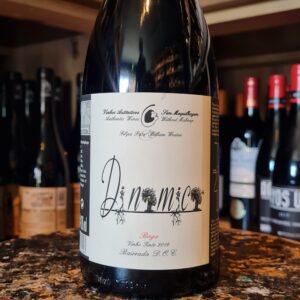 Filipa Pato is the confirmation of the old saying "son of fish knows how to swim". Although she followed the footsteps of her father Luís Pato, even in her academic training, Filipa always wanted to have her own world, her own project, where she would show her ideas, and go up with her own pulse. It was the 2001 harvest, a great year in Bairrada, which would provide all of this. That year, she decided to walk on her own feet, creating her dream. The success was immediate, and soon she rose to the status of one of the most brilliant winemakers in Portugal. The wines are the result of Filipa's innovative and brilliant spirit. They were quickly at the forefront of national and international criticism. In 2011, with her husband William Wouters, a prestigious Belgian Sommelier and owner of the Pazzo restaurant in Antwerp, Filipa receives the title "Newcomer of the year".
Filipa Pato is the confirmation of the old saying "son of fish knows how to swim". Although she followed the footsteps of her father Luís Pato, even in her academic training, Filipa always wanted to have her own world, her own project, where she would show her ideas, and go up with her own pulse. It was the 2001 harvest, a great year in Bairrada, which would provide all of this. That year, she decided to walk on her own feet, creating her dream. The success was immediate, and soon she rose to the status of one of the most brilliant winemakers in Portugal. The wines are the result of Filipa's innovative and brilliant spirit. They were quickly at the forefront of national and international criticism. In 2011, with her husband William Wouters, a prestigious Belgian Sommelier and owner of the Pazzo restaurant in Antwerp, Filipa receives the title "Newcomer of the year". -
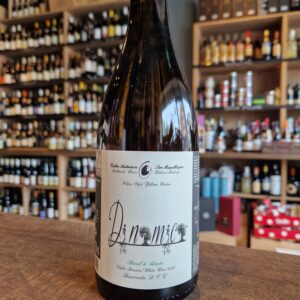 Filipa Pato and husband, William Wouters have created an expressive range of wines representing the native grape varietals of the Barriada region. Their philosophy is simple: "create authentic wines without make-up to express the true nature of the vineyards they come from". Bairrada is a coastal DOC which borders Vinho Verde, Dão and Lisboa. It has mild and wet winters and hot windy summers. The climatic thermal range, brought about by the Atlantic influence, brings high acidity and freshness to the grapes here. Filipa and William practice biodynamic viticulture and are undergoing conversion to organic certification. The wine is unfined. Drink with sheep and goats cheese, dressed salads, and delicate poultry dishes.
Filipa Pato and husband, William Wouters have created an expressive range of wines representing the native grape varietals of the Barriada region. Their philosophy is simple: "create authentic wines without make-up to express the true nature of the vineyards they come from". Bairrada is a coastal DOC which borders Vinho Verde, Dão and Lisboa. It has mild and wet winters and hot windy summers. The climatic thermal range, brought about by the Atlantic influence, brings high acidity and freshness to the grapes here. Filipa and William practice biodynamic viticulture and are undergoing conversion to organic certification. The wine is unfined. Drink with sheep and goats cheese, dressed salads, and delicate poultry dishes. -
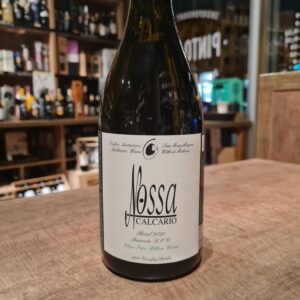 This mineral-driven white wine from Filipa Pato is akin to top quality white Burgundy. Using the Bical grape, the wine is aged in old French oak barrels and displays a great balance between creamy richness and lean minerality. Following in the footsteps in the winemaking traditions of her well-known father, Luis, Filipa Pato has now, in her own right, garnered a reputation for producing a superb range of wines in the heart of Bairrada, in Ois do Bairro. Focussing on Bairrada’s local native grape varieties, Filipa’s top-level white. It should be served not too cold, decanted into elegant glasses. It goes well with cheeses, fish dishes and salads.
This mineral-driven white wine from Filipa Pato is akin to top quality white Burgundy. Using the Bical grape, the wine is aged in old French oak barrels and displays a great balance between creamy richness and lean minerality. Following in the footsteps in the winemaking traditions of her well-known father, Luis, Filipa Pato has now, in her own right, garnered a reputation for producing a superb range of wines in the heart of Bairrada, in Ois do Bairro. Focussing on Bairrada’s local native grape varieties, Filipa’s top-level white. It should be served not too cold, decanted into elegant glasses. It goes well with cheeses, fish dishes and salads. -
Out of stock
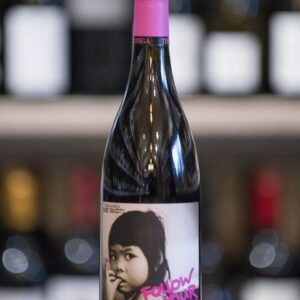 Craig and Carla Hawkins launched Testalonga in the north of Swartland, South Africa in 2008. They are part of a revolutionary ground swell taking place in South African wine, where traditions are being challenged and brave new territory is being explored. The painfully small amount of wine that this duo produces gets snapped up in short order the world over. Known for their striking intensity and nervy energy, Craig and Carla's wines are on the cutting edge of the natural wine movement in their country.This is the lightest, daintiest version of Carignan one could imagine. It's got more in common with, say a Jura rouge or something Cab-Franc-like out of the Loire Valley than a classic Rhone red.It's fresh, racy, filled with character and seasoned with a little wildness. Great with on summer afternoon, first courses, seasoned vegetables. Enjoy
Craig and Carla Hawkins launched Testalonga in the north of Swartland, South Africa in 2008. They are part of a revolutionary ground swell taking place in South African wine, where traditions are being challenged and brave new territory is being explored. The painfully small amount of wine that this duo produces gets snapped up in short order the world over. Known for their striking intensity and nervy energy, Craig and Carla's wines are on the cutting edge of the natural wine movement in their country.This is the lightest, daintiest version of Carignan one could imagine. It's got more in common with, say a Jura rouge or something Cab-Franc-like out of the Loire Valley than a classic Rhone red.It's fresh, racy, filled with character and seasoned with a little wildness. Great with on summer afternoon, first courses, seasoned vegetables. Enjoy -
Out of stock
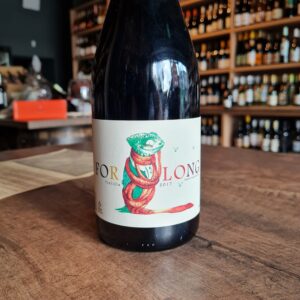 Fourth project of Bodegas Forlong (Cádiz). Vineyard consists of albariza soils in the Pago de “el Forlon” in Balbaina Baja, located in the coastal area of Puerto de Santa Maria, 7 km from the sea. Takes advantage of the proximity of the sea, and the purity of the albariza, as well as the local salt-peters which impart saline, chalky character to the grapes. The Tintilla de Rota grape, a native variety of the area, already existed on the farm along with the rest of the grapes, but they did not give it any value at the beginning, to the point that the first year they even gave it away. Once they discovered its potential "we almost pulled our hair at the thought that we had been giving it away." Has limited production of 2700 Bottles. As it is a native variety, they wanted to reflect it in some way on the label, and what better way than to put a native animal like the chameleon, which needs albariza soils that are easy to move to bury its eggs. Their long and rolled tongue is a reflection of Rocío and Alejandro's adventure of "rolling the blanket over their heads" when making a quality organic wine with Tintilla de Rota. Its vinification is carried out in clay jars, thus being a different wine. Pair it with entrecote steak, slow-cooked lamb, suckling pig, BBQ and grilled meats, porcini mushrooms, Jerusalem artichokes, hard cheeses, olives, jamón de pata negra.
Fourth project of Bodegas Forlong (Cádiz). Vineyard consists of albariza soils in the Pago de “el Forlon” in Balbaina Baja, located in the coastal area of Puerto de Santa Maria, 7 km from the sea. Takes advantage of the proximity of the sea, and the purity of the albariza, as well as the local salt-peters which impart saline, chalky character to the grapes. The Tintilla de Rota grape, a native variety of the area, already existed on the farm along with the rest of the grapes, but they did not give it any value at the beginning, to the point that the first year they even gave it away. Once they discovered its potential "we almost pulled our hair at the thought that we had been giving it away." Has limited production of 2700 Bottles. As it is a native variety, they wanted to reflect it in some way on the label, and what better way than to put a native animal like the chameleon, which needs albariza soils that are easy to move to bury its eggs. Their long and rolled tongue is a reflection of Rocío and Alejandro's adventure of "rolling the blanket over their heads" when making a quality organic wine with Tintilla de Rota. Its vinification is carried out in clay jars, thus being a different wine. Pair it with entrecote steak, slow-cooked lamb, suckling pig, BBQ and grilled meats, porcini mushrooms, Jerusalem artichokes, hard cheeses, olives, jamón de pata negra. -
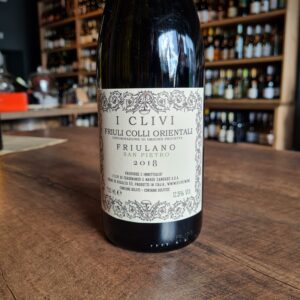 The wines of i Clivi are born in Friuli in between the Collio Goriziano and the eastern hills of Udine, named Colli Orientali, where, on sunny slopes – clivi meaning “slopes” – Altogether there is cultivated 12 hectares of certified organic vineyards planted with the indigenous varieties Ribolla, Friulano, Verduzzo, and Malvasia, whose only international grape is Merlot, a variety which found home in this area more than a century ago. Taking care of this important heritage of old vines, aged between 60 and 80 years, it is for Ferdinando and Mario Zanusso a reminder of the responsibility with which they guard and produce wine on this strip of land, giving the chance to express two distinct D.O.C. denominations, Collio, and Colli Orientali del Friuli, whose sensory difference is related exclusively to the microclimate. The low yields produced by these old vines give a natural concentration and complexity to the fruit they seek to transform naturally with spontaneous fermentation, maintaining the elegance and aromatic integrity through careful maturation in steel tanks for 50,000 bottles of varietal wines with great personality, distinguished grace, and delicacy.
The wines of i Clivi are born in Friuli in between the Collio Goriziano and the eastern hills of Udine, named Colli Orientali, where, on sunny slopes – clivi meaning “slopes” – Altogether there is cultivated 12 hectares of certified organic vineyards planted with the indigenous varieties Ribolla, Friulano, Verduzzo, and Malvasia, whose only international grape is Merlot, a variety which found home in this area more than a century ago. Taking care of this important heritage of old vines, aged between 60 and 80 years, it is for Ferdinando and Mario Zanusso a reminder of the responsibility with which they guard and produce wine on this strip of land, giving the chance to express two distinct D.O.C. denominations, Collio, and Colli Orientali del Friuli, whose sensory difference is related exclusively to the microclimate. The low yields produced by these old vines give a natural concentration and complexity to the fruit they seek to transform naturally with spontaneous fermentation, maintaining the elegance and aromatic integrity through careful maturation in steel tanks for 50,000 bottles of varietal wines with great personality, distinguished grace, and delicacy. -
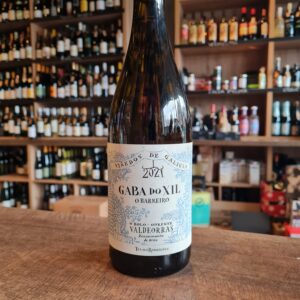 This slinky, mineral white hails from Valdeorras (“Valley of Gold”) in eastern Galicia, a region once famous for goldmining and now best known for its unique and complex wines made from the indigenous Godello grape. The wine is named for the river Sil that flows through the region (Xil is its ancient name, used by the Celtic people who once inhabited the area). Many of the river’s tributaries are flanked on either side by vineyards, planted in terraces on steep slate hillsides. The label displays a dozen bridges, symbolizing the idea of crossing from one vineyard plot to another. Gaba do Xil Godello is produced partially from grapes that are partially estate-grown and partially sourced from long-term suppliers. They come from 4 plots (O Val Grande, O Rasedo, A Torgueira, and O Valverde) located near the Bibei tributary, close to the town of Santa Cruz. Dotted with chestnut trees mixed with rockrose, the old granitic terraces barely have enough space to squeeze in the odd row of vines, following the folds of the mountains that plunge into the river. The vines grow in shallow, stony granite soils on terraces facing south, west and northwest. These coarse soils are low fertility and have low water retention capacity, forcing the vines to struggle and limiting yields. This Godello, is unoaked, gentle, restrained and precise which is dry and soft with a touch of godello's distinctive minerally citrus fruit, absoloutly perfect with light sea food dishes. Excellent value
This slinky, mineral white hails from Valdeorras (“Valley of Gold”) in eastern Galicia, a region once famous for goldmining and now best known for its unique and complex wines made from the indigenous Godello grape. The wine is named for the river Sil that flows through the region (Xil is its ancient name, used by the Celtic people who once inhabited the area). Many of the river’s tributaries are flanked on either side by vineyards, planted in terraces on steep slate hillsides. The label displays a dozen bridges, symbolizing the idea of crossing from one vineyard plot to another. Gaba do Xil Godello is produced partially from grapes that are partially estate-grown and partially sourced from long-term suppliers. They come from 4 plots (O Val Grande, O Rasedo, A Torgueira, and O Valverde) located near the Bibei tributary, close to the town of Santa Cruz. Dotted with chestnut trees mixed with rockrose, the old granitic terraces barely have enough space to squeeze in the odd row of vines, following the folds of the mountains that plunge into the river. The vines grow in shallow, stony granite soils on terraces facing south, west and northwest. These coarse soils are low fertility and have low water retention capacity, forcing the vines to struggle and limiting yields. This Godello, is unoaked, gentle, restrained and precise which is dry and soft with a touch of godello's distinctive minerally citrus fruit, absoloutly perfect with light sea food dishes. Excellent value -
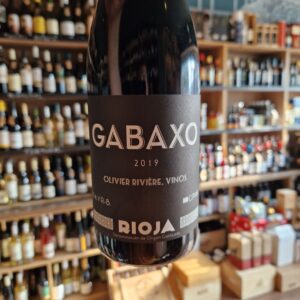
Rioja Gabaxo Olivier Riviere Biodynamic Wine, Wild yeast, French oak Maturation, full bodied but beautifully fresh and balanced. No new oak in Gabacho, but loads of classy Rioja character and sheer drinkability! Gabacho does see some wood, a small amount of old french barrels are used for ageing up to a year. This adds no flavour but helps to soften the wine slightly. This really is lovely stuff, rich but very fresh and balanced red wine with a touch of the dark and brooding about it and a touch of the animal too. It benefits from decanting and also from good bottle ageing. Try it, it will change your mind about Rioja
-
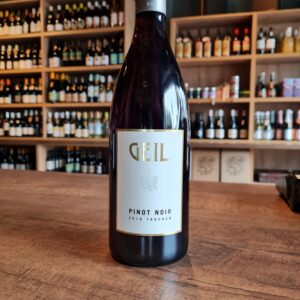 Weingut J. Geil is a winery making approachable, quaffable wines, all along the lines of greatly respecting the nature. This reflects in quality of their fruit and subsequently in their wines. Awarded many trophies each year, Weingut Geil belongs among some of the top German producers. There is nothing to be take lightly about their Pinot Noir, a serious, serious wine. Beautifully earthy and soft, with plenty of ripe wild berries. Excellent balance and considerable length. Accessible and juicy, yet wholeheartedly deep genuinely expressing the terroir of Bechtheim
Weingut J. Geil is a winery making approachable, quaffable wines, all along the lines of greatly respecting the nature. This reflects in quality of their fruit and subsequently in their wines. Awarded many trophies each year, Weingut Geil belongs among some of the top German producers. There is nothing to be take lightly about their Pinot Noir, a serious, serious wine. Beautifully earthy and soft, with plenty of ripe wild berries. Excellent balance and considerable length. Accessible and juicy, yet wholeheartedly deep genuinely expressing the terroir of Bechtheim -
Out of stock
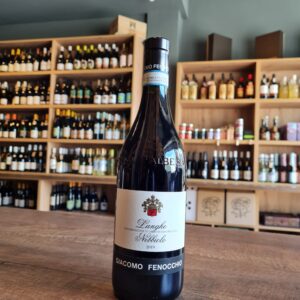 Since 1864, five generations of the Fenocchio family have been producing wine in the heart of Barolo - most of them born in the same yellow house in Monforte d’Alba, at the top of a hillside covered in Nebbiolo grapes. Claudio Fenocchio took upon his father teachings and instead of modernazing the Barolo winemaking techniques, he and with the support of his brothers decided to keep the tradition and build on it. Fenocchio has not taken up organic or biodynamic farming methods but, on the other hand, the estate never took to chemical fertilisers or herbicides, so diverse ground cover and natural predators protect the vines, which grow at their own pace. And in the winery, fermentation is similarly driven by nature and the local microflora. Technically, Claudio has found a way of producing wines which have approachable fruit when young, yet built around a strong tannic structure which does not overwhelm early on, but encourages the development of the wine over years. It is partly due to some green harvesting and careful selection, partly due to enzymatic reaction (ironically) during the long fermentation, which melds the fruit and tannin seamlessly. Barolos are aged for five months in stainless Slovenian oak and a further year in the bottle before release. steel, two years in Slovenian oak and a further year in the bottle before release. More than defining itself as traditional or modern Barolo, Giacomo Fenocchio wine is an expression of terroir.
Since 1864, five generations of the Fenocchio family have been producing wine in the heart of Barolo - most of them born in the same yellow house in Monforte d’Alba, at the top of a hillside covered in Nebbiolo grapes. Claudio Fenocchio took upon his father teachings and instead of modernazing the Barolo winemaking techniques, he and with the support of his brothers decided to keep the tradition and build on it. Fenocchio has not taken up organic or biodynamic farming methods but, on the other hand, the estate never took to chemical fertilisers or herbicides, so diverse ground cover and natural predators protect the vines, which grow at their own pace. And in the winery, fermentation is similarly driven by nature and the local microflora. Technically, Claudio has found a way of producing wines which have approachable fruit when young, yet built around a strong tannic structure which does not overwhelm early on, but encourages the development of the wine over years. It is partly due to some green harvesting and careful selection, partly due to enzymatic reaction (ironically) during the long fermentation, which melds the fruit and tannin seamlessly. Barolos are aged for five months in stainless Slovenian oak and a further year in the bottle before release. steel, two years in Slovenian oak and a further year in the bottle before release. More than defining itself as traditional or modern Barolo, Giacomo Fenocchio wine is an expression of terroir. -
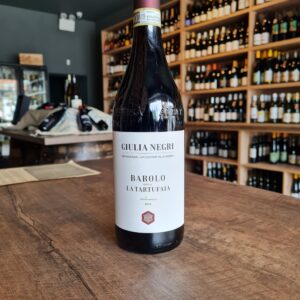 Giulia Negri is a young talent that goes by the nickname "Barolo girl" in the wine world. The grapes for this archetype of a modern-traditional Barolo come from the top vineyards Brunate and Serradenari, the latter is located at an altitude of up to 520 m, and the soils are clayey-sandy. It is an area with a particularly cool and breezy microclimate, which is reflected in the elegant profile of the wines. Climbing towards the top of the hill, the soils become increasingly rich in sandy veins and limestone marl, which contribute to giving Barolo an extreme expressive refinement. The high quality grapes, a work in the cellar that is very respectful of the raw material and aimed at enhancing the typical characteristics of the terroir, allow the creation of a Barolo faithful to the land of origin. Dressed to impress, savory red with a fine fragrance on the palate that doesn't deny its origin and the grape variety, it is of an almost unique elegance and freshness that allows it to be identified as a lively and completely complete top wine even when young. Further years of maturity are certainly not a mistake, because one feels impressively how the complexity increasing with the age joins the finesse and elegance already unmistakable today. One bottle for now and don't put the rest too far away in the cellar, please!
Giulia Negri is a young talent that goes by the nickname "Barolo girl" in the wine world. The grapes for this archetype of a modern-traditional Barolo come from the top vineyards Brunate and Serradenari, the latter is located at an altitude of up to 520 m, and the soils are clayey-sandy. It is an area with a particularly cool and breezy microclimate, which is reflected in the elegant profile of the wines. Climbing towards the top of the hill, the soils become increasingly rich in sandy veins and limestone marl, which contribute to giving Barolo an extreme expressive refinement. The high quality grapes, a work in the cellar that is very respectful of the raw material and aimed at enhancing the typical characteristics of the terroir, allow the creation of a Barolo faithful to the land of origin. Dressed to impress, savory red with a fine fragrance on the palate that doesn't deny its origin and the grape variety, it is of an almost unique elegance and freshness that allows it to be identified as a lively and completely complete top wine even when young. Further years of maturity are certainly not a mistake, because one feels impressively how the complexity increasing with the age joins the finesse and elegance already unmistakable today. One bottle for now and don't put the rest too far away in the cellar, please! -
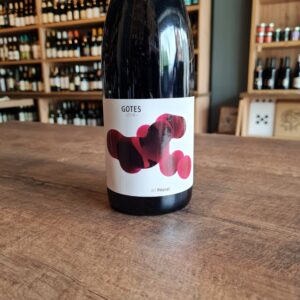 Gotes was the last to be incorporated into the Portal del Priorat's wine family, the Alfredo Arribas project in this denomination, and was envisioned to highlight the freshness of Priorat wines; gotes (drops) of freshness, like dewdrops. Don't expect to find in Gotes the more usual Priorat typicity, with profound maturity and intense minerality. Gotes reflects another type of Priorat wine, refined, in the French style (we mean 'French' as in Burgundy), with a fresh and floral profile. The typicity of Gotes is rooted in the countryside, in its notes of aromatic plants, and in that delightful warmth, because although fresh it is Mediterranean. Another special feature of Gotes is the polish and attention to detail it emits; it's an elegant wine; it has clearly been crafted by experts. If Gotes is refined on the nose, it's positively explosive on the palate! It grows and grows, with lots of volume and a very seductive sweetness and velvety texture. Gotes is fruit, but a very varied fruit cocktail: red fruits, black fruits, both fresh and jammy, the odd juicy stone fruit like mango (the Garnacha always leaves its mark) and fresh grapes that provide a citrusy touch. Ideal with dishes of a upper middle power taste. Will be excellent with a salad of figs and duck ham with Parmesan shavings. It will also be great taking with red meats, duck breast grilled or thigh kid with cider and soft alioli.
Gotes was the last to be incorporated into the Portal del Priorat's wine family, the Alfredo Arribas project in this denomination, and was envisioned to highlight the freshness of Priorat wines; gotes (drops) of freshness, like dewdrops. Don't expect to find in Gotes the more usual Priorat typicity, with profound maturity and intense minerality. Gotes reflects another type of Priorat wine, refined, in the French style (we mean 'French' as in Burgundy), with a fresh and floral profile. The typicity of Gotes is rooted in the countryside, in its notes of aromatic plants, and in that delightful warmth, because although fresh it is Mediterranean. Another special feature of Gotes is the polish and attention to detail it emits; it's an elegant wine; it has clearly been crafted by experts. If Gotes is refined on the nose, it's positively explosive on the palate! It grows and grows, with lots of volume and a very seductive sweetness and velvety texture. Gotes is fruit, but a very varied fruit cocktail: red fruits, black fruits, both fresh and jammy, the odd juicy stone fruit like mango (the Garnacha always leaves its mark) and fresh grapes that provide a citrusy touch. Ideal with dishes of a upper middle power taste. Will be excellent with a salad of figs and duck ham with Parmesan shavings. It will also be great taking with red meats, duck breast grilled or thigh kid with cider and soft alioli. -
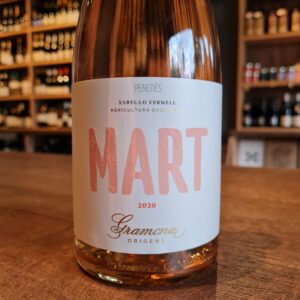 Biodynamic Rosé made from pink skinned Xarel.lo – a variety indigenous to the Penedès region that has been brought back from the brink of extinction. Mediterranean fruits and herbs. Delicate and complex. Recommended spicy dishes such as those found in Japanese, Nikkei, Caribbean and South American cuisine. Rice dishes and seafood. Excellent for aperitifs.
Biodynamic Rosé made from pink skinned Xarel.lo – a variety indigenous to the Penedès region that has been brought back from the brink of extinction. Mediterranean fruits and herbs. Delicate and complex. Recommended spicy dishes such as those found in Japanese, Nikkei, Caribbean and South American cuisine. Rice dishes and seafood. Excellent for aperitifs. -
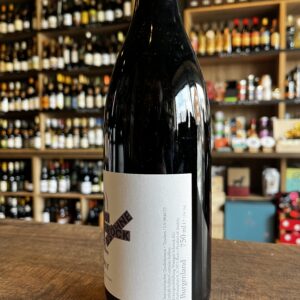
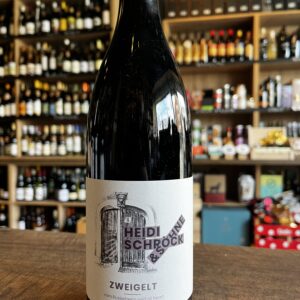 Heidi took over her family’s 10 hectare estate in 1983, in the famous village of Rust, Burgenland, just five miles from the Hungarian border. Her south-east-facing vineyards along the western banks of Lake Neusiedl form a semi-amphitheatre, providing considerably more sunlight hours compared to the rest of Austria. The soils here are sandy with clay, gravel, grey quartz and schist. Heidi sustainably cultivates the classic Austrian varieties, Zweigelt, Blaufränkisch and St Laurent, as well as pioneering the revival of traditional varieties, such as Furmint, better known today across the Hungarian border. Heidi, Georg and Johannes. One woman, two young men. Mother and sons. In an ancient winegrower´s estate in the center of the renowned Freistadt Rust, the vinophile trio produces some of the most sought after white, rosé, red and sweet wines made in Austria - principally from autochthonus varieties of the region. The shining stars of the company, Schröck sweet wines, have represented the house for many years. Liquid elegance dressed in gold. Heidi Schröck & Söhne. A small, fine established company with big, aspiring ideas. Open, inspired, passionate. And pretty delicious
Heidi took over her family’s 10 hectare estate in 1983, in the famous village of Rust, Burgenland, just five miles from the Hungarian border. Her south-east-facing vineyards along the western banks of Lake Neusiedl form a semi-amphitheatre, providing considerably more sunlight hours compared to the rest of Austria. The soils here are sandy with clay, gravel, grey quartz and schist. Heidi sustainably cultivates the classic Austrian varieties, Zweigelt, Blaufränkisch and St Laurent, as well as pioneering the revival of traditional varieties, such as Furmint, better known today across the Hungarian border. Heidi, Georg and Johannes. One woman, two young men. Mother and sons. In an ancient winegrower´s estate in the center of the renowned Freistadt Rust, the vinophile trio produces some of the most sought after white, rosé, red and sweet wines made in Austria - principally from autochthonus varieties of the region. The shining stars of the company, Schröck sweet wines, have represented the house for many years. Liquid elegance dressed in gold. Heidi Schröck & Söhne. A small, fine established company with big, aspiring ideas. Open, inspired, passionate. And pretty delicious


